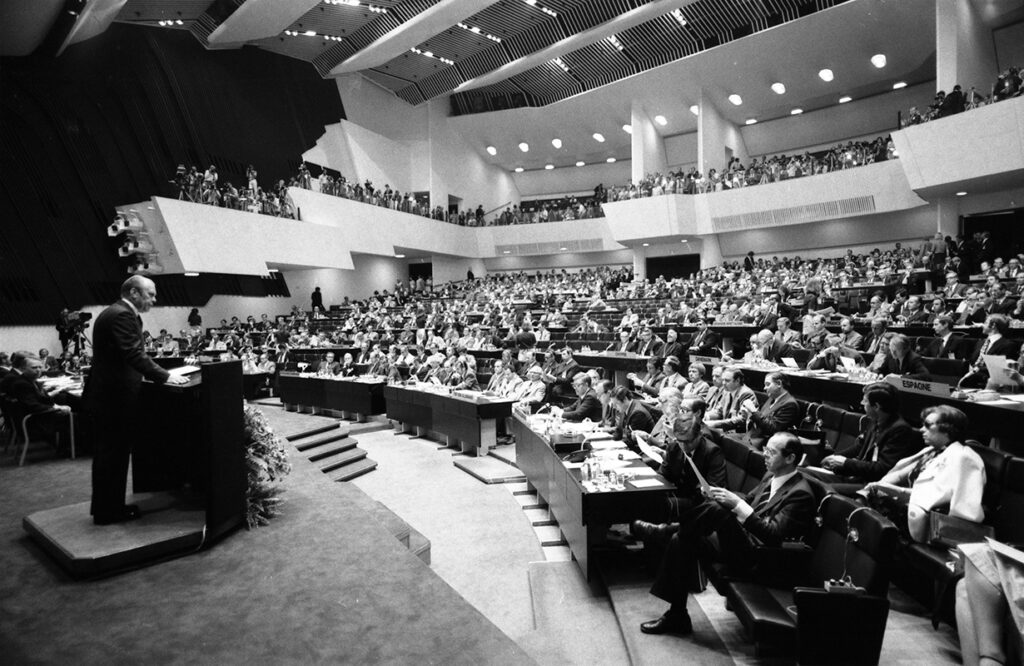When President Ford reflected on his time in office, he cited the Helsinki Accords as his greatest foreign policy achievement. From July 30 to August 1, 1975, world leaders converged on Finlandia Hall, a newly-built conference venue in Helsinki, Finland, to attend the Conference for Security and Cooperation in Europe (CSCE) and sign the Helsinki Accords. The Accords were part of a broader détente strategy begun during the Nixon administration with the goal of easing tensions with the Soviet Union. By 1975, many Americans felt that détente was little more than appeasement, looking the other way in the face of Soviet dominance in Eastern Europe.
Nevertheless, President Ford felt that American participation at the CSCE would demonstrate a commitment to diplomatic engagement and ongoing dialogue with the Soviet Union and its Eastern European allies. Furthermore, American involvement signaled the nation’s commitment to advancing human rights globally and signing the Accords held nations—including the Soviet Union—accountable for their human rights practices.

A5837-34
Courtesy Gerald R. Ford Presidential Library & Museum
The different components of the Helsinki Accords were grouped into four “baskets.” Basket I confirmed existing borders in Europe, demanded the peaceful resolution of disputes, respect for human rights, and self-determination for European nations. Basket II recognized international cooperation in science, the environment, technology, and commerce. Basket III called for the free transfer of people, information, and ideas. Basket IV required monitoring and follow-up of the other three baskets, holding the Soviet Union accountable.
Because the Accords were a declaration rather than a treaty, President Ford did not need Senate approval to sign. Although signing the Accords was non-binding, the principles laid out in the Accords served as a foundation for human rights standards for decades to come.
President Gerald R. Ford delivers remarks at the Conference on Security and Cooperation in Europe (CSCE) in Helsinki, Finland, on August 1, 1975. The Helsinki Accords were signed at this Conference. Naval Photographic Center Film 360-123C-76, Reel 2.

A5963-07A / NAID: 23898513
Courtesy Gerald R. Ford Presidential Library & Museum
When President Ford spoke at the summit, he told the gathered world leaders that the Helsinki Accords were a “challenge, not a conclusion,” the first steps in breaking Soviet domination in Eastern Europe. He continued, “History will judge this Conference not by what we say here today, but by what we do tomorrow—not by the promises we make, but by the promises we keep.” While he faced criticism for his decision to sign the Accords, in the intervening decades historians have recognized the important role they played in promoting human rights around the world.
Ford reflected decades later, “…it was the right thing to do, and I think in retrospect now, most objective critics will agree that the Helsinki Accords were the spark…that brought about the demise of the Soviet Union.”
Author: Dr. Mirelle Luecke
